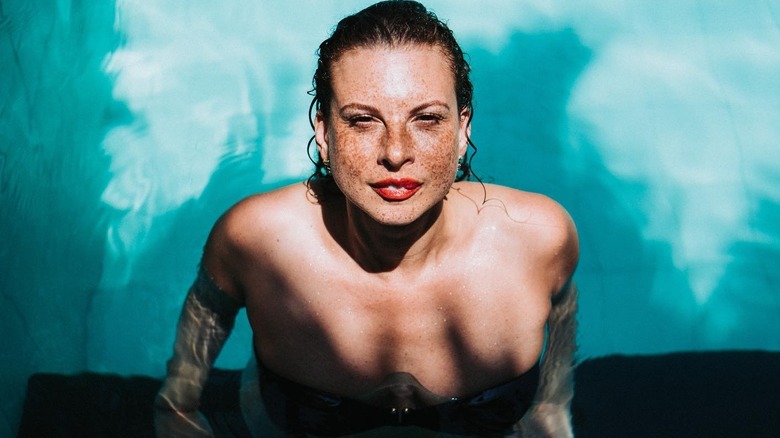What Sunburn Can Tell You About Your Skin's Undertones
Whether you're off skiing, walking outside in the dead of winter, or roasting on the beach, the sun is a powerful force in our lives. It operates all year, and even when it seems to be on vacation behind cloud cover, it can still cause your skin to burn. Because of this, it's always a good idea to find new ways to get sunscreen into your routine.
Being spontaneous is probably sexier than laboriously planning ahead, but you'll really benefit from pausing a few moments to take care of your skin before you venture outside. For instance, consider whether foundations with SPF provide enough sun protection.
And unless you're incredibly disciplined all day every day, it's likely you'll get a surprise sunburn at some point. Even a few minutes of sipping an Aperol spritz by the pool might be enough to burn your skin, depending on your complexion. What do you do when this happens? Well, as with any challenge big or small, grab it and learn something new.
Look at your overtone and undertones
According to the Fitzpatrick skin type, a scale that classifies skin color according to how it responds to the sun, a sunburn can tell you a lot about your skin's undertones. Undertones reveal everything about what colors look best on you, from your foundation to clothing to coloring your hair.
If we look at the difference between an undertone and an overtone, the overtone is how you identify, your skin color — black, white, brown, yellow, or red. In contrast, the undertone is the glow beneath your primary skin color, and we all fall into one of four basic categories: cool, warm, neutral, or olive. Healthline's graphic illustrates the differences at a glance. There's a myth that lighter-skinned people automatically have a cool undertone and that very dark skin is warm, but the opposite can be true. Undertone operates independently from skin color, creating a stunning diversity of skin shades.
People with the darkest skin color tan easily and have more melanin, which protects against the sun. They may not be able to detect the redness from a burn, but will still experience all the other symptoms, like excess heat from the skin, itchiness, sensitivity, and eventually, peeling. If you burn quickly and your skin flushes to a bright, bluish-toned red, your undertone is most likely cool. But if you tan easily to a golden, peachy beige, you're most likely on the warmer or olive side.
Other ways to identify your skin's undertone
One way to determine your undertone without the sunburn is to get your colors analyzed professionally by a color analyst. They will be able to tell you whether you're a winter, spring, summer, or autumn, and they're trained to distinguish between cool, warm, neutral, and olive tones.
Do you gravitate more to silver or gold jewelry? If you look bright and sparkling with chunky silver earrings, you're a cool, which has pink or blue undertones. But even if you prefer a certain color, it may not suit you — If you look closely at the silver next to your face and you look pale or drained, you're working against your undertone. If gold makes your skin glow, you're probably warm, which is yellow, peach, or beige undertones. Because olive has a greenish hue, gold might look best, and neutrals can wear just about anything.
Your eye color and natural hair color might provide additional clues. The very lightest eye colors, like ice blue, light green, and gray will often correspond to cool undertones, and sometimes the darkest eye color will indicate a warm tone. You may need to dive deeper into these other methods, though, to get the most accurate picture. Ultimately, regardless of your skin color and undertone, we recommend using sunscreen and choosing foundation and clothing that matches your coolness or warmth.


